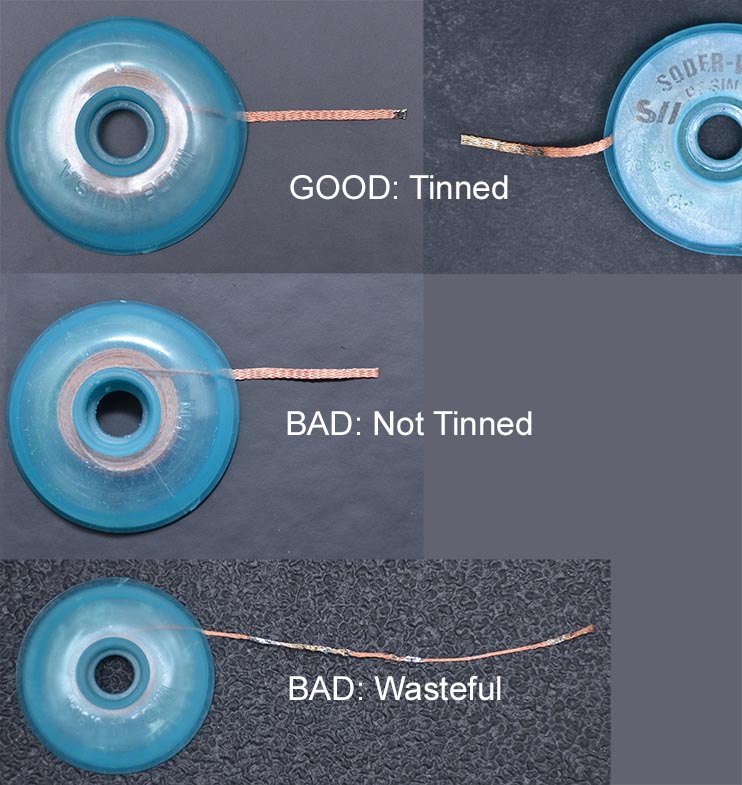I'm trying to replace the triac in a floor lamp dimmer, and completely failing to remove solder from the pads with desoldering braid. I've desoldered plenty of times before, though admittedly not recently, and this is the first time I have ever seen desoldering braid simply not work.
I placed the braid over the joint, heated through the braid, and nothing happened. After multiple attempts, I decided my iron must just be too old or dirty or something, so I ordered a new one, but that made no difference. Then I decided my desoldering braid of uncertain provenance might have been sitting around too long, and perhaps all of the flux was gone, so I tried other packs, and ordered more braid from DigiKey, but that didn't help either.
The best I was able to do was melt the solder—which the iron has no problem doing—and kind of wick it away with the iron, but by that point some of the pads were lifting up or severed. The TO-220 in question is at the upper right of the image below. I also tried desoldering elsewhere on the board, just in case I was dealing with some crazy localized problem.
I have two more of these dimmers, one of which still works, and another one which does not, but I really like the lamps, and would like to get all of them working again. I know some people swear by solder suckers as in this question, but what stumps me is that I've never before had any problems with desoldering braid. Could my triac board have been made with some other kind of solder that copper desoldering braid can't suck up?


